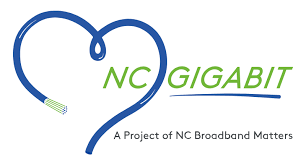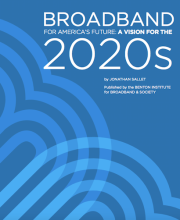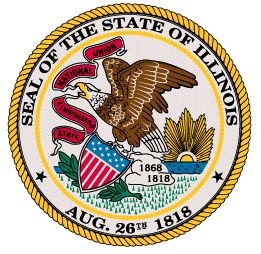
Fast, affordable Internet access for all.


This week is episode three of the new podcast project we're working on with the nonprofit NC Broadband Matters, whose focus is on bringing ubiquitous broadband coverage to local communities for residents and businesses in North Carolina.
The ten episode podcast series, titled "Why NC Broadband Matters," explores broadband and related issues in North Carolina.
 This week, Christopher and his guests explore mapping in our episode titled, "Broadband Mapping Means Money: Understanding How Data Drives Decisions.”
This week, Christopher and his guests explore mapping in our episode titled, "Broadband Mapping Means Money: Understanding How Data Drives Decisions.”
He talks first with Brian Rathbone, Co-Founder of Broadband Catalysts, a consulting firm that works with communities, non-profits, corporations, and governments to expand broadband Internet access. Brian and Christopher dig into federal mapping data and talk about some of the challenges in obtaining accurate data.
Jeff Sural works as Director of the Broadband Infrastructure Office for the North Carolina Department of Information Technology. He and Christopher take the mapping conversation to the state level. Jeff describes the work of the Office and explains why it's important that the state have the most accurate information possible. He explains state methods that involve citizen input about Internet access to help them get a more accurate picture of connectivity for residents and businesses in North Carolina.
We want your feedback and suggestions for the show-please e-mail us or leave a comment below.
This show is 54 minutes long and can be played on this page or via Apple Podcasts or the tool of your choice using this feed, at the Community Broadband Bits page, or at the NC Broadband Matters page. We encourage you to check out other "Why NC Broadband Matters" content at the podcast feed so you don't miss future bonus content that may not appear in the Community Broadband Bits Podcast feed.
Transcript below.
We want your feedback and suggestions for the show-please e-mail us or leave a comment below.
Listen to other episodes here or view all episodes in our index. See other podcasts from the Institute for Local Self-Reliance here.
Thanks to Shane Ivers for the Music: What's The Angle? by Shane Ivers -
Image of the American Community Survey Map courtesy of the NC One Map uses U.S. Census Bureau Data shows the percentage of households in North Carolina with no Internet connection.

The Benton Institute for Broadband & Society has a reputation for looking at today’s reality with an eye toward tomorrow’s needs. In their report, Broadband for America’s Future: A Vision for the 2020s, Benton Senior Fellow Johnathan Sallet continues that perspective and offers insightful recommendations for a new National Broadband Agenda.
Download the report, Broadband for America’s Future: A Vision for the 2020s here.
Broadband for All Needs a New Approach
As access to high-quality connectivity becomes more critical each day, those without fast, affordable, reliable Internet access lose ground more quickly as time passes. In addition to the opportunities that come with broadband access, lack of adoption translates into lack of technical skills. Innovation isn’t slowing down for folks who don’t have broadband.
As Sallet notes, access to and adoption of broadband improves our economy, strengthens communities, and empowers American workers. Obtaining that access and expanding that adoption, however, is proving more challenging than it should be.
In his report, the author reviews in detail the barriers that have prevented the U.S. from achieving its goal of ubiquitous access and adoption of broadband. He’s able to make recommendations based on four key policy areas:
Deployment of networks where adequate broadband does not exist;
Competition to increase choices and spur lower prices and better-quality service to their residents;
Affordability and Adoption for those who wish to have broadband in their homes but lack the means or the skills to acquire it; and
Community Anchor Institutions, such as schools and libraries, that increasingly serve their users wherever they are.
"The Same Fabric of Truth-Seeking"
UTOPIA Fiber will soon be branching out as they continue to forge partnerships with local communities in their region. In addition to expanding their own infrastructure, the organization is working across the state line to help Idaho Falls expand a municipal network.
Funding in Place
The Utah Infrastructure Agency (UIA) recently announced that it will provide $48 million to UTOPIA Fiber to facilitate expansion of the network. UIA is a separate entity, but the two operate as an integrat; leaders from both entities credit this approach for the growth of the network since 2009. According to a November 14th press release, UIA secured the funding with Lewis Young Robertson & Burningham, Inc. (Financial Advisor), KeyBanc Capital Markets Inc. (Senior Managing Underwriter), and Gilmore & Bell (Bond and Disclosure Council).
Executive Director of UTOPIA Fiber Roger Timmerman said:
“We have the best partners in the business who have worked relentlessly over the past few months to get us to this point. The demand for municipally-owned fiber has skyrocketed and we are excited to be a leader in the industry. Over the past four years, UTOPIA Fiber has doubled the number of subscribers on its fiber network and has entered into partnerships with several additional communities.”
The newly acquired funding demonstrates a growing interest in open access fiber network infrastructure as investment. The UTOPIA Fiber network is currently an option for more than 100,000 premises, providing multiple options for households and businesses in a competitive environment. Other open access networks in locations around the U.S. are in the works, including publicly and privately owned infrastructure.
According to the press release, this is the fourth round of funding that UIA has closed on within the last year in order to meet demand and expand to additional communities.
Connecting an Expanding List of Communities
The U.S. Department of Agriculture (USDA) recently awarded a $2.85 million grant to Forked Deer Electric Cooperative headquartered in Halls, Tennessee, and $9.75 million to Orangeburg County, South Carolina to develop broadband infrastructure. The awardees will use the ReConnect grants to construct or expand existing Fiber-to-the-Home (FTTH) Internet access to thousands of households, critical community facilities, and educational facilities.
A Reconnect Primer
In 2019, Congress allocated $600 million for the ReConnect Program to help expand high-quality Internet access to rural America. Applicants can apply for a 100 percent grant, 100 percent loan, or a grant-loan combination. The ReConnect Program provides funding to allow for-profit companies, rural cooperatives, local governments, and tribes to deploy broadband infrastructure under specific guidelines. The service area for qualified applicants must be rural communities with 90 - 100 percent of the population considered "underserved," defined as Internet access speeds of 10 Megabits per second (Mbps) download and 1 Mbps upload or lower.
As we reported in September, more than half of the applications submitted came from cooperatives and local governments.
Orangeburg County
Under the American Recovery and Reinvestment Act (ARRA), Orangeburg County was awarded federal stimulus funds in 2010 and added around $4 million of their own money for rural broadband projects. Shortly following the stimulus package award, the state legislature enacted a law discouraging simlar local investment. The law requires local governments to charge rates for broadband Internet services similar rates to those of private companies, even if service could be provided at a lower cost. This law effectively limits local broadband authority and discourages communities from developing publicly owned networks.
Open access networks offer opportunities for competition and innovation that networks owned and operated by one entity can’t provide. We've written about open access networks owned, operated, and funded by public entities; now private investors are increasingly attracted to these competitive, fiber optic environments.
Changing Paradigm
Over time, American Internet access subscribers have become accustomed to the idea that options are limited because large, corporate Internet access providers have positioned themselves so as not to compete with one other. In areas where local communities have deployed open access models, such as in Ammon, Idaho, or in places with regional open access networks, like UTOPIA Fiber in Utah and the many Public Utility District networks (PUDs) in the state of Washington, those connecting to the network have benefitted from ISP choice and access to high-quality connectivity.
In Europe and Asia, open access models appear more regularly, but in the U.S., the open access arrangement has primarily been adopted by local governments offering wholesale service to ISPs. Often they do so as a way to comport with state law. In the past few years, however, private companies and investment firms have seen the potential of open access fiber optic infrastructure in the U.S. For example, SiFi Networks announced a project in Fullerton, California, earlier this year with plans to establish similar infrastructure projects in other communities.
We recently touched base with Kelly Ryan, CEO of iFiber Communications, an Internet service provider that operates via open access networks owned and operated by PUDs in Washington. We also talked with James Wagar, Managing Director of Thomas Capital Group, who has eyes on open access fiber optic network projects.
The Finance Piece
The Benton Institute for Broadband & Society has a reputation for looking at today’s reality with an eye toward tomorrow’s needs. In their report, Broadband for America’s Future: A Vision for the 2020s, Benton Senior Fellow Johnathan Sallet continues that perspective and offers insightful recommendations for a new National Broadband Agenda.
Download the report, Broadband for America’s Future: A Vision for the 2020s here.
Broadband for All Needs a New Approach
As access to high-quality connectivity becomes more critical each day, those without fast, affordable, reliable Internet access lose ground more quickly as time passes. In addition to the opportunities that come with broadband access, lack of adoption translates into lack of technical skills. Innovation isn’t slowing down for folks who don’t have broadband.
As Sallet notes, access to and adoption of broadband improves our economy, strengthens communities, and empowers American workers. Obtaining that access and expanding that adoption, however, is proving more challenging than it should be.
In his report, the author reviews in detail the barriers that have prevented the U.S. from achieving its goal of ubiquitous access and adoption of broadband. He’s able to make recommendations based on four key policy areas:
Deployment of networks where adequate broadband does not exist;
Competition to increase choices and spur lower prices and better-quality service to their residents;
Affordability and Adoption for those who wish to have broadband in their homes but lack the means or the skills to acquire it; and
Community Anchor Institutions, such as schools and libraries, that increasingly serve their users wherever they are.
Deploying Better Networks, Creating Choice
Applicants in the first round of the U.S. Department of Agriculture’s (USDA’s) ReConnect Loan and Grant Program requested over $1.4 billion to finance rural broadband expansion, exceeding available funds by more than $800 million. Despite tough competition, much of the funding may go to community broadband networks, since more than half of the applicants are publicly or collectively owned, including electric and telephone cooperatives, local governments, and federally recognized tribes.
As was the case in previous federal programs, most community broadband providers applying for ReConnect funds plan to deploy modern, high-speed fiber networks. Unlike the large telecom monopolies, which are letting their rural networks rot even while raking in government subsidies, community owned networks frequently leverage federal funds to deploy future-proof fiber optics in their rural service areas.
ReConnect Review
In 2018, Congress authorized $600 million for the ReConnect program to expand high-quality connectivity in rural America by providing grants and loans to Internet access providers. The first round of ReConnect applications closed earlier this summer with $200 million available in each of the three funding categories:
Earlier this year, Congress approved an additional $550 million for the program, which the USDA will distribute after awarding round one funds.
In June, Governor JB Pritzker signed the Rebuild Illinois capital plan, a $45 billion effort that will repair and improve all manner of infrastructure in the state. Within the plan, state leaders intend to dedicate $420 million to upgrade and expand broadband infrastructure. Such a significant investment can make a real difference in the state, as long as decision makers adopt smart policies and allow local communities to receive funding for broadband projects.
Gas Tax for Gigabits
An increase in the state’s motor fuel tax will fund most of the broadband initiative. The increase in gas prices at the pump, which took effect on July 1, jumped from 19 to 38 cents. Similarly, a special fuels tax on diesel, liquefied natural gas, and propane increased from 2.5 cents to 5 cents. State analysts anticipate the increase will garner an additional $1.24 billion to state coffers in 2020.
The Rebuild Plan also grants state bonding authority for infrastructure projects and Cook County municipalities are permitted to raise their gas taxes by an additional three cents per gallon. There are also title and registration fees that will contribute to the fund.
As part of the plan, Illinois created the Connect Illinois initiative, which is part of the Illinois Department of Commerce. One of the goals of the initiative's Broadband Office is to provide all K-12 students with high-speed Internet access at no charge. As part of the Rebuild Illinois plan, $20 million will be used to update and expand the Illinois Century Network, which serves K-12 schools, colleges and universities, public libraries, and Internet access providers.
 Connect Illinois and the initiative’s Broadband Office will administer the grants made possible by the fuel tax increase. The office will also work to determine federal grants that are available and how best to access them to advance the state's goals.
Connect Illinois and the initiative’s Broadband Office will administer the grants made possible by the fuel tax increase. The office will also work to determine federal grants that are available and how best to access them to advance the state's goals.
Connectivity Council
Earlier this week, Presidential hopeful Elizabeth Warren released her Plan to Invest in Rural America, which contained a framework for improving broadband policy and expanding high-quality Internet access.
You can read her full plan on Medium.
Funding Needed, Spent Wisely
Some of Warren’s goals for proposed policy changes include:
Warren’s plan also focuses on financing infrastructure development in rural areas, and creates some guidelines to address the problems with the current system. Her plan includes:
Improving the FCC
Warren also wants FCC Commissioners who will restore network neutrality protections and improve mapping. By making changes in the FCC’s Office of Native Affairs and Policy, Warren plans to further attack the digital divide for indigenous people.
Read more of Elizabeth Warren’s Plan to Invest in Rural America at Medium.
The Office of Broadband Development (OBD) at the Minnesota Department of Employment and Economic Development (DEED) recently released a call for Border to Border Broadband grant applications. The deadline to submit your application is September 13, 2019.
This year, the State Legislature has appropriated $20 million in funding for projects located in unserved or underserved communities. As a reminder, Minnesota has established the thresholds as:
Unserved area: households or businesses lack access to wire-line broadband service at speeds of 25 Megabits per second (Mbps) download and 3 Mbps upload.
Underserved area: households or businesses do receive service at or above 25 Mbps / 3 Mbps, but lack access to wire-line broadband service at speeds of 100 Mbps download and 20 Mbps upload.
The OBD has posted a map of the state which allows users to to input addresses and quickly determine if their location qualifies for grant funding. Check it out here.
Who Can Apply?
As other states have shaped their broadband grant programs, they’ve looked to Minnesota for guidance. One of the shining characteristics of the Border to Border Broadband Broadband Development program has been the diverse field of eligible applicants. In some states, grants can only go to private sector companies, but Minnesota takes an “all hands on deck” approach. Eligible applicants include:
Eligible Program Costs and Matching Funds
Applicants can only receive grant funding if they provide matching funds, which can come from any public or private source. The project infrastructure must be able to support minimum symmetrical speeds of 100 Mbps.